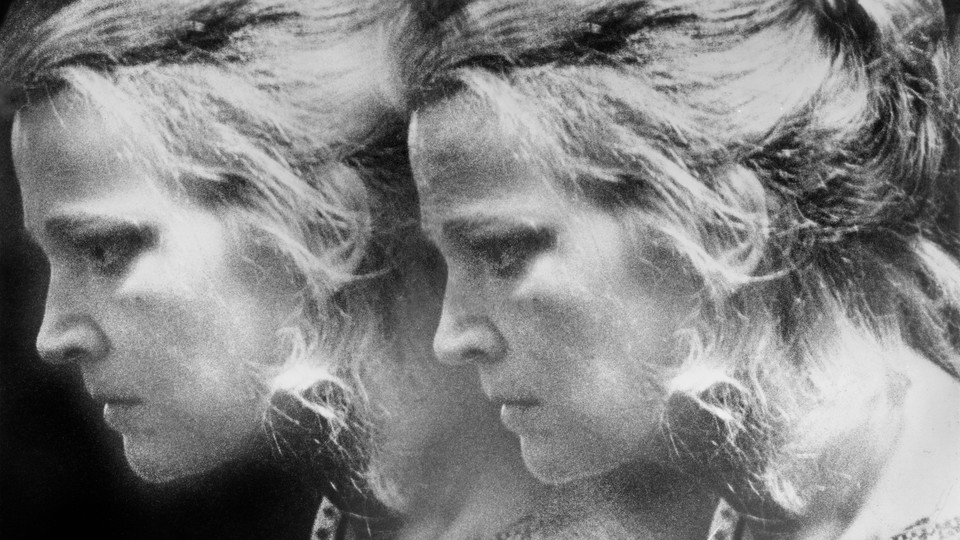What Gena Rowlands Knew About Marriage
5 min read
Gena Rowlands was an up-and-coming stage actor when she married the actor and director John Cassavetes in 1954. Beginning with his directorial debut, 1959’s Shadows, Cassavetes would alter the vernacular of American independent film, exploring working-class lives through a lyrically loose, near-guerilla style of low-budget filmmaking. And throughout the duo’s marriage, which lasted for nearly 35 years until Cassavetes’s death in 1989, the movies they made together would establish Rowlands as a luminous and fierce screen presence. Rowlands, who died last Wednesday, was an active partner on these projects, creating her characters through suggestion and rehearsal.
Whether Rowlands was a divorcée licking her wounds (1984’s Love Streams), or a woman getting involved with a married man (1968’s Faces, 1971’s Minnie and Moskowitz), the terrain of love was the rich wellspring for so many of her creative collaborations with Cassavetes. She eagerly mined the many identities and feelings within the role of romantic partner, be it “wife” or “girlfriend” or “other woman”—the pliant maternal figure and the woman of ambition and spark, someone altogether difficult and agreeable and desperate for both love and independence.
Her greatest performance of this role, in 1974’s A Woman Under the Influence, earned her a nomination for Best Actress at the Academy Awards. In that movie, Rowlands plays a woman named Mabel Longhetti, a housewife to a blue-collar construction worker and mother to three young children but also a well-known local “wacko” who experiences an unnamed mental illness, and flirts and shouts and trembles at whim. Mabel had a tuft of straw-blond hair and red-rimmed eyes, and usually a cigarette dangling from her lips. Her speech often trailed into wordless sputters, her mouth silently gaping like an unlucky fairground goldfish. She was in such constant, jerky physical motion that it seemed as though she was flickering, like a refrigerator light on the fritz.
As Mabel, Rowlands offered a raw vulnerability in every facial contortion and wild gesticulation. She was utterly porous, equally capable of boundless imagination and untrammeled despair. At one point, not long before she is sent to a mental hospital, Mabel says to her three children, “I never did anything in my whole life that was anything, except I made you guys.” In the voice of another actor, it might sound like one of those smuggled-in directorial lines that reveals the secret feminist intent of the movie. Not so with Rowlands. She pokes the kids playfully in their bellies, delivering the words with casual satisfaction—merely proud that she has, at the very least, brought these little creatures into the world.
That refusal to play to the obvious is evident throughout A Woman Under the Influence, where Mabel’s mother-in-law and family doctor converge to have Mabel committed and later stage an ill-advised party to welcome her home. Mabel is a volcanic, unpredictable character, although the movie ends with scenes of apparent domestic calm that might seem to squelch her spirit. Though biographer Ray Carney once noted that “all of Cassavetes’ work is stunningly hopeful,” Mabel and her husband, Nick (Peter Falk), ultimately share what feels like a pyrrhic victory.
The tough kind of love presented as the reality of marriage might be explained somewhat by Rowlands and Cassavetes’s own relationship. They were both born scrappers and not shy about discussing it. “Together we lead a magnificent, unassembled, emotional, and undisciplined life,” Cassavetes once said. “I can’t think of anyone with whom I would rather argue or love than my wife.” This attitude would seem to bear itself out in Mabel’s acceptance of her husband’s verbal and sometimes physical abuse. The couple tries to abide by their marital vows, even as there appears to be no real road to the normality Nick craves. This is, in some respects, a damning depiction of married life—of the narrow frameworks that can suffocate men and women alike. There’s a brutal logic to sticking together: Pragmatically and emotionally, these two people need each other. (Scenes of Nick trying to solo parent his children are uneasy and awkward.) Remaining in the marriage may be death by a thousand cuts, but the alternative—actual separation, and pitching into the unknown—feels worse for them.
Rowlands’s genius intuition for performance went beyond well-observed physical detail; her body of work was about the larger complexities of navigating marriage in such a precarious period of social change, as the emerging feminist movement during the ’60s and ’70s helped reshape opportunities for and expectations of women. In her movies, she excavated the humanity and the anguish of contorting yourself into someone wife-shaped while losing any identity beyond it. When you’re attached to a man—and especially a man like Nick, who is not a monster but is also congenitally incapable of making a sensitive decision—love and self-abasement become closely intertwined.
Speech clatters and overlaps constantly in the film, but viewers will notice how many times Mabel and Nick say “I love you.” In the chaos before Mabel is committed, she stands with her back nearly against the wall, making catlike noises of indignation at her would-be rescuers. As she’s trying to list five reasons why her married life is good, Nick cuts her off to say he loves her. It’s an apology, and an attempt at controlling the situation—but it’s also, actually, genuine love.
Throughout the film, Mabel often displays a sponge-like need for Nick’s assurances. This time, she snaps right back into her panic. Those assurances are no longer working, and there’s the dilemma. Mabel is a woman who believes that this kind of stifling love should be enough. For Rowlands, across her career, love was a force that could bolster a person as well as damn them. Her commitment to revealing that evergreen contradiction—in marriage and in life—is what makes her work so timeless.



